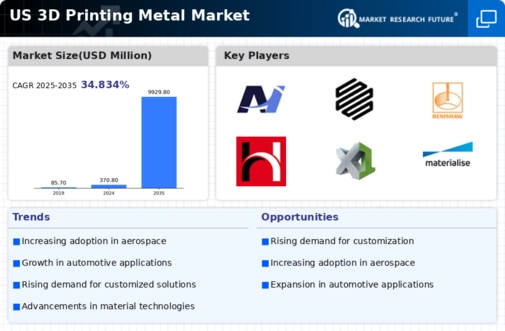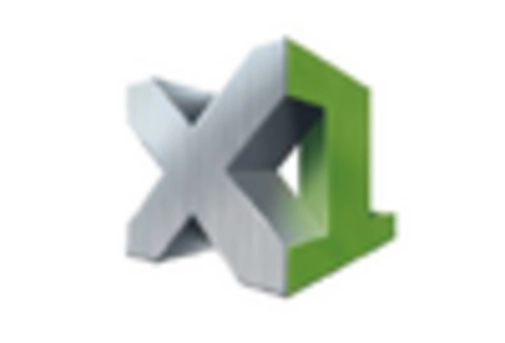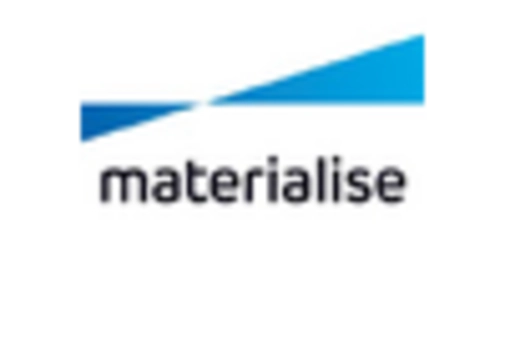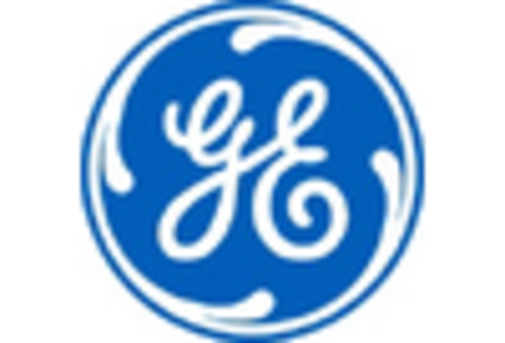The US 3D Printing Metal Market has emerged as a highly competitive landscape, driven by technological advancements, diverse applications across various industries, and increasing demand for innovative manufacturing solutions. As companies adopt 3D printing technology to enhance their production capabilities, the competitive dynamics are characterized by a mix of established players and new entrants that are continuously striving to differentiate their offerings. Factors such as material quality, printing speed, precision, and the ability to produce complex geometries play a pivotal role in determining market positions.
Furthermore, collaboration with industries such as aerospace, automotive, and healthcare has led to significant investments in research and development, further intensifying competition in this market.Additive Industries is recognized for its robust presence in the US 3D Printing Metal Market, showcasing strengths in innovative technology and customer-centric solutions. The company has made notable strides with its metal additive manufacturing systems, focusing on high precision and the use of advanced materials to meet the specific needs of various industries. Its capacity to offer tailored solutions allows it to cater to a diverse range of applications, enhancing its competitive edge.
With a commitment to advancing metal 3D printing technology and fostering collaborative partnerships, Additive Industries continues to reinforce its market position, leveraging its strengths to capitalize on the growing demand for efficient and scalable manufacturing processes in the United States.Markforged is another key player in the US 3D Printing Metal Market, distinguished by its innovative product offerings and cutting-edge technology. The company provides a unique array of services that include not only 3D metal printing but also composite materials, positioning it as a versatile provider in the additive manufacturing space.
Markforged has earned a reputation for producing high-strength parts that seamlessly integrate into the manufacturing workflow, greatly appealing to sectors requiring robust and rapid prototyping solutions. Its market presence is further enhanced by strategic mergers and acquisitions, enabling the company to expand its capabilities and innovate its product line. The focus on customer needs and continuous adaptation to market trends has solidified Markforged’s strengths, making it a formidable competitor within the US landscape of metal 3D printing.




















Leave a Comment